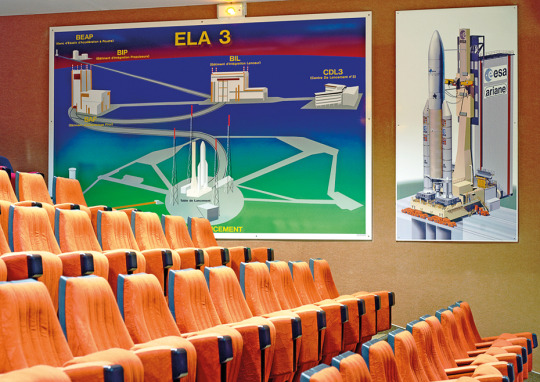Don't wanna be here? Send us removal request.
Text
Intelligence gathering seems like a distant world, but traces of it surround us all, every hour of every day.
Numbers stations are mysterious broadcasts of coded messages intended for undercover intelligence agents in enemy states. Shadows of the State adapts open source research and satellite image interpretation in order to investigate these broadcasts and to locate the transmitters for thirty of these stations, from Russia to Libera, Cyprus to South Korea. The book presents detailed information about each station, including satellite maps, radio spectrograms, and scanable barcodes which reveal recordings of their transmission
2 notes
·
View notes
Video
youtube
https://aesthetics.fandom.com/wiki/Liminal_Space
Liminal spaces are something that have always existed, but haven’t exactly had an official term. The appearance of the space in question isn’t what’s so fascinating about the liminal space. It’s the feelings that are created when a particular design is interacted with outside of its intended context.
The word “liminal” is derived from the Latin word “limens,” which means threshold. When you’re interacting with a liminal space, you’re quite literally standing on the threshold between two realities. For example, a rest stop on the highway is designed to be just that. A rest stop between your place of departure and your destination. These areas are not meant for you to stay in for very long. In this case, your realities are your place or origin and your destination, while the threshold is the journey, the rest stop included.
Once you step outside the rest stop’s intended purpose by staying for much longer than you usually would, you begin to experience the sensation of “reality shifting.” This sensation can occur in many places too: empty train stations, stairwells, schools during summer break, laundromats at night...the list goes on.
Perhaps the most interesting about liminal spaces is that our reaction to them is reflective of our dependency on functional design. Viewing a space within an accepted context is what we as humans innately look for; however, outside of that, in a liminal space, we lean away from it because it lacks context and purpose.
When it comes to design, we crave a rational explanation for the existence of a particular space and, when we can’t come up with one, we avoid it altogether.
https://theludlowgroup.com/2018/05/31/why-do-liminal-spaces-feel-like-an-altered-reality/
0 notes
Link
0 notes
Link
0 notes
Link
0 notes
Link
0 notes
Link
EARTH NOT A GLOBE Earth Not a Globe takes its name from an influential volume on one of the most extreme conspiracy theories, claiming the earth’s surface to be flat rather than spherical. Substantiated by Samuel Birley Rowbotham at the end of the nineteenth century, this theory has since brought together a large community of devotees who continue to spread the word virally today. For this project, Philippe Braquenier cuts straight to the heart of the discursive mechanisms at work within these conspiracy theories, pinpointing and dissecting a series of ‘flat earth’ -supporting statements using his singular experience. To achieve this, he adopts the procedures used by Rowbotham’s disciples, to display the same empirical experience through images. He thus creates ‘forensic’ evidence by manipulating, fragmenting, misappropriating, and editing, removing the images (accompanied by brief captions) from their context, which could lead us to doubt the earth’s rotation or the existence of gravity itself… were it not for a key detail: the author has left the signs and marks of his plastic intervention visible as clues of his working process. By combining the codes of documentary photography and his own explicit subjectivity, he appears to take a resolutely reflective stance on his practice. In this way, both conspiracy rhetoric and the stereotypes and automatisms informing his photographer’s viewpoint are called into question In an age of post-truth and globalized information, his work ultimately represents a critical reflection on our relationship to images and their potential power as agents of conspiracy theories.
PHILIPPE BRAQUENIER
Born 1985 in Mons, Belgium. Lives and works in Brussels, Belgium. Philippe Braquenier is fascinated by knowledge; intrigued by how it is collected, used, shared and stored. He illustrates these notions with photographs that depict the ethereal data centers where humanity’s information is stored, or through images of exposed but unrevealed photographic film. Braquenier’s work prompts a discourse about our obsession to preserve information in a time when data is becoming ever more omnipresent, yet all the more unseen.
0 notes
Link
Photographer John Angerson was granted unprecedented access to the Kennedy Space Center, Florida and the Johnson Space Center, Houston, Texas, USA, to document the final months of a yearlong intensive training program preparing for the NASA (STS-72) in January 1996. Since the first manned space mission, some of the most important items that the astronauts have brought back from space have been their photographs, which have over the years permanently changed the way we think, feel and see our place in the universe.
0 notes
Link
0 notes
Video
youtube
¨In a debate what is the construct? It’s typically two people and there’s an audience and you debate some opposite sides of some issue and then there’s a winner of the debate. And everyone walks away reflecting on the winner.
So who wins a debate? It’s often the person who’s charismatic, who mau be charming that’s related to charisma of course. Who had a good way with words, good vocabulary. And you can have someone who doesn’t have any of that who is speaking objective truths who could lose a debate.
So then what is the point of the debate if one of these points of view is objectively true? I will not enter a debate where I have the objectively true side of an argument and the other person does not. That is something that should not be debated, does not belong in front of an audience getting debated.
You want to debate something? Debate political policy of what to do in the face of climate change. Do you have carbon tax? Do you have solar panels? Do you subsidize them? Debate that. Don’t debate something that is or is not objectively true in this world. ¨
Neil deGrasse Tyson
#debate#truth#post truth#space#flat earth#neil degrasse tyson#climate change#fiction#video#science#thesis#studio 2
2 notes
·
View notes
Photo

Vicent Fournier - Classroom, Arianespace, Guiana Space Center, French Guiana 2007
13 notes
·
View notes
Video
vimeo
Vicent Fournier video reference
About his work and also Space/NASA
1 note
·
View note
Link
Visual Ref
Space Project
"Space Project is my founding series, started in 2007 and still going on. It tells the story of both the past and the future of space exploration, from the memories of the Apollo program that followed the first steps of man on the moon, to the future NASA SLS rocket destined for Mars. My photographs are a mix of historical and documentarian vision of space adventure with scenes staged inspired by cinema and my childhood memories. My aesthetic, philosophical, and recreational fascination with outer space undoubtedly comes from the imagery and books from the 1970s and 80s – television series, science fiction novels and documentaries – that were blended and superimposed in my memory. Emblematic locations for space exploration look like cinema sets where Mon Oncle from Jacque Tati movie might meet with Jules Verne in Stanley Kubrick’s 2001: A Space Odyssey… My latest images from December 2019 show the Artemis project, at the NASA Glenn Research Center, whose objective is to return to the Moon in order to develop an orbital station that will then serve as a starting point to go to Mars.
"Space exploration is humanity’s great adventure, a leap into the unknown towards a dark light beyond Earth’s protective atmosphere and the gravity that keeps us there. Space represents the universal desire not only to contemplate the sky, but also to project oneself into it. Desire, from the Latin work "desiderare", means regret and “nostalgia for a lost star”. But how can one desire something unknown? Could it be that – stardust that we are – we are reminded of a primeval time when we floated in space? Might men not be gods fallen from the sky, unconscious of the fact, but nevertheless nostalgic for the star they have lost?
I photographed both the past and the future of space exploration between 2007 and now, from the space race in the 1960s to the NASA SLS launch vehicle expected to go to Mars. The present decade marks the transition from political to economic considerations in space, and the introduction of a worldwide dimension. After the Cold War and the domination of the super powers, the space sector became less of a military priority than an economic one also involving investments by private rms with multiple interests: communication, science, research and development, ecology, health, technology, and even space tourism.
The ambivalence between fantasy and reality in Vincent Fournier’s photographs confronts the myth of space race with a sense of irony. It appears like a magnificent children's play provoking a diffusion between waking and dreaming. His ghostly, composed photographs-mysterious, space-suited men walking on a vast desert plain, a researcher quietly sitting in a blindingly white sterile environment, abandoned monitors blinking codes in a simulation room—have an otherworldly, unreal aesthetic. In these fascinating images, Fournier explores the paranoia and darkness of man’s attraction to the disconnect of space. — Sawako Akune, GQ Japan
I would like to thank all the space centres that have placed their trust in me and allowed me to venture behind the doors of these secretly guarded places. They have allowed me to relive my childhood dreams and I am grateful to them. Thank you to the NASA centers in the United States, John F. Kennedy Space Center (Florida), Johnson Space Center (Texas), Langley Research Center (Virginia), Stennis Space Center (Mississippi), Marshall Space Flight Center (Alabama), Michoud Assembly Facility (Louisiana), the ILC company in Deleware (making NASA suits since the Apollo program), also in America the private companies Virgin Galactic, Google LunarXprize, Astrobotic, Moon Express and Synergy Moon, in Russia the Yuri Gagarin Training Center of the City of Stars, in Kazakhstan the cosmodrome Roscomos (Baikonur), in French Guiana the Arianespace centre and in France EADS Space, CNRS, and ISAE, the European Space Agency (ESA), in Holland the ESTEC centre, in Germany PT Scientists, in Israel SpaceIL, in Japan Hakuto, in India TeamIndus, in the Atacama Desert in Chile the ESO observatories, Paranal and ALMA, IRAM in France, Mauna Kea in Hawaii, VLA in New Mexico, Carma in California, the Kjell Hendriksen, Eiscat and KHO aurora borealis observatory on Svalbard Island in Norway, and the MDRS Martian simulation base in the Red Desert of

1 note
·
View note
Link
1 note
·
View note

